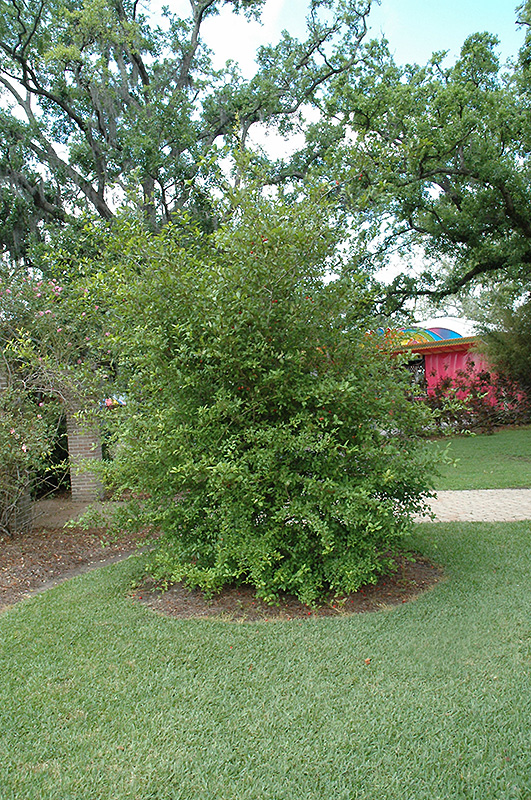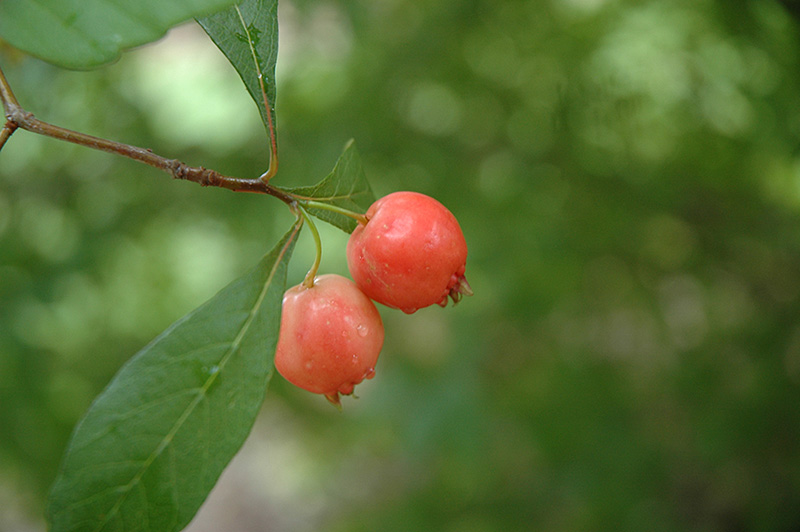Plant Finder
* This is a "special order" plant - contact store for details
Height: 20 feet
Spread: 15 feet
Sunlight:
![]()
![]()
Hardiness Zone: 4a
Other Names: Riverflat Hawthorn, Western Mayhaw, Apple Haw
Description:
A beautiful shrub or small tree for accent use in home landscapes; snowy white flowers in spring before the leaves, followed by bright red fruit that can be made into preserves; very thorny
Edible Qualities
Mayhaw is a large shrub that is typically grown for its edible qualities. It produces tomato-orange fruit (technically 'pomes') which are typically harvested when mature. The fruits have a tart taste.
The fruit are most often used in the following ways:
- Preserves
Features & Attributes
Mayhaw is smothered in stunning clusters of white flowers held atop the branches in early spring before the leaves. It has forest green deciduous foliage. The oval leaves turn an outstanding red in the fall. The fruits are showy tomato-orange pomes carried in abundance in late spring.
This is a dense multi-stemmed deciduous shrub with a shapely oval form. Its average texture blends into the landscape, but can be balanced by one or two finer or coarser trees or shrubs for an effective composition. This is a relatively low maintenance plant, and is best pruned in late winter once the threat of extreme cold has passed. It is a good choice for attracting birds to your yard. Gardeners should be aware of the following characteristic(s) that may warrant special consideration;
- Spiny
Aside from its primary use as an edible, Mayhaw is sutiable for the following landscape applications;
- Accent
- Hedges/Screening
- Naturalizing And Woodland Gardens
Planting & Growing
Mayhaw will grow to be about 20 feet tall at maturity, with a spread of 15 feet. It has a low canopy with a typical clearance of 1 foot from the ground, and is suitable for planting under power lines. It grows at a medium rate, and under ideal conditions can be expected to live for 40 years or more.
This plant is typically grown in a designated edibles garden. It does best in full sun to partial shade. It is quite adaptable, prefering to grow in average to wet conditions, and will even tolerate some standing water. It is not particular as to soil type or pH. It is somewhat tolerant of urban pollution. This species is native to parts of North America.
* This is a "special order" plant - contact store for details

